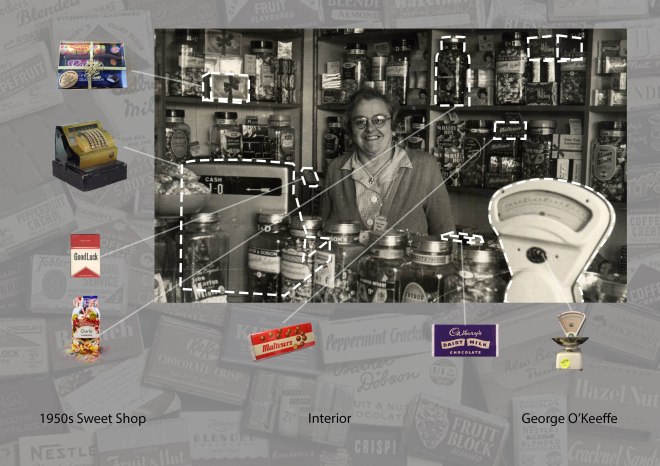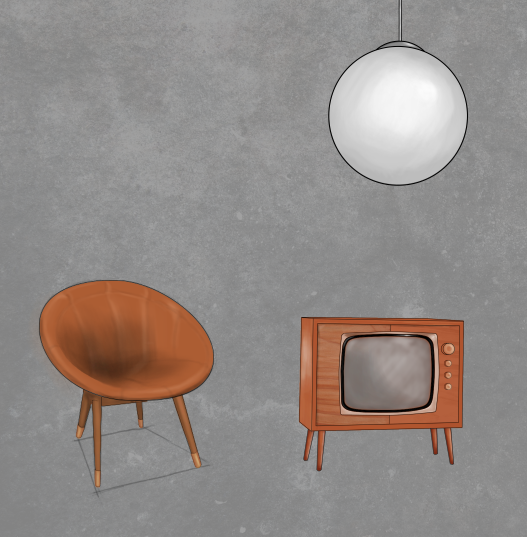Date : 6/1/16
First thing in the morning, we were given a mini assignment where we were going to have to create an art bible for a concept created by another member of the class. Simon broke the idea up into 5 headings – The year the game was set, the place it was set in, the environment that the player could interact with, the style of the game and the game context (meaning the type of game these scene would be set in). I chose a 1940s game set on a film set in hollywood. The style was to be a rough and dirty noire style game, with mobsters and crime. I chose for the game context to be a Time-Crisis style shooter. Freddy was given the task of creating my concept, and I was in turn given his. He chose to create a 1950s sweetshop environment, set in South London, in a “The Room” style game.

I immediately began researching 1950s photographs of South London in general, and tried to decipher the mood and atmosphere of the area. It seemed to be a sort of busy and active place, that may have been a bit rough around the edges, but had a surprising sense of community. I then narrowed the search down to shops, and then sweet shops in the 1950s, and I started to research Cadburys. I found a really interesting photograph of a sweet shop carrying Cadburys chocolate bars that created a real sense of atmosphere. I then found an image of a smaller, more local sweet shop, and I decided to pick this image apart into the core assets that would be essential in recreating this environment. There was a really interesting cash register and weighing scales for measuring quantities of sweets. The sweets sat in the iconic glass sweet jars that are so notorious to this day. There was a few packs of cigarettes for sale, as well as boxes of Maltesers, and gift boxes. I then researched all of these elements a little more. I researched the kind of advertising that would be positioned in the shop, and looked into the exterior elements that could create the facade. I finally looked at lighting, looking at typical filament bulbs in large frosted glass lampshades, as well as a traditional fluorescent Coca-Cola sign. This whole activity was really interesting, and looking at how the rest of the class broke down their briefs was really useful.
I then went on to work on my own, adding a few more pages to my own art bible. I drew a few concept pieces of furniture from the 1970s style hotel decor that I felt would be essential in my scene.
These assets are sort of iconic 1970s style furniture, but unfortunately 1970s style furniture tends to be very round. This will probably cause a few issues when I get to modelling, as modelling almost exclusively round objects for mobile is probably not the right way to go. I also researched the types of assets that would come with an abandoned scene, like flakey paint walls, rubble, broken bottles and old mouldy mattresses. Finally, I finished off by studying how nature typically reclaims land when it is abandoned. I looked at ivy, the way trees engulf man-made objects, the way weeds and ivy creep through any gaps that have formed.
Summary:
The art bible is an incredibly powerful tool. Even a topic that you know nothing about can be pretty manageable after completing an art bible, as can be seen from the 1950s sweet shop project we did.